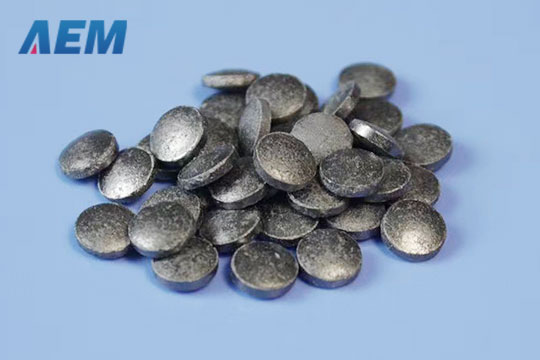How to Evaporate Titanium?
views, Updated: 2021-09-30
Titanium can be evaporated via electron beam evaporation or thermal evaporation.
E-beam evaporation is preferred. It is important to note that titanium alloys with refractory metals.
A material’s evaporation temperature is often regarded as needed for the material’s equilibrium vapor pressure to be 1E-2 Torr. At that vapor pressure, the deposition rate on a substrate in a system of “normal” geometry is good or high. For titanium, that temperature is ~1,750C. Titanium has to melt and “wet” a boat or crucible for efficient evaporation to take place. Titanium is liquid and quickly alloy with a refractory boat at this temperature, destroying its electrical and mechanical properties. The result is boat cracking and falling apart.
A second option for thermal evaporation is to use a shielded tantalum crucible heater with a tall, intermetallic crucible. Thin-films of titanium can be evaporated from intermetallic crucibles. However, the film thickness may be limited to 500 angstroms, and the crucible may need to be replaced for each subsequent run. Intermetallic crucibles are composed of titanium boride (TiB2) and boron nitride (BN). This material combination works well because the material is both lubricious and electrically conductive. The crucible is strong and conductive, yet its lubricious properties help prevent material spill-over and crucible cracking. Great care must be taken when installing the heater to avoid the outer shields from becoming warped, which can cause a short in the heater, failing the welded joints. The heater should be centered between the contacts, and the outer shielding must be clear of the leads.
Using the heater/crucible set-up involves heat transfer by thermal radiation across the interfaces (heater-crucible exterior and crucible interior-evaporant surface) and by conductivity through the crucible and evaporant. For titanium to reach proper evaporation temperature, the heater and crucible must be higher (in some instances, much higher) in temperature. A significant portion of that power is simply radiated to the cold chamber walls. Customers typically observe high input powers and high thermal loads on the substrate.
While some customers have tried the heater/crucible method for thermally evaporating titanium, it is possible that the set-up could fail. The heater/crucible may not get hot enough to melt and evaporate the titanium. Overfilling the crucible can also be detrimental to the process. The titanium could creep out over the crucible walls and react with the heater causing it to fail.
One downside of the heater/crucible set-up is that liquid titanium is a universal solvent. In other words, it reacts with and destroys almost all crucible materials. Titanium once diffused through the crucible, can attack the heater as well.
The heater/crucible option is more cost-prohibitive than the tungsten boat option. It could fail during the first run or even before if the material does not reach the evaporation's proper temperature. Extra boats should be ordered since they fail relatively quickly. Compared to the heater/crucible set-up, the cost savings of the boats typically offsets any extra downtime incurred to switch out the boats.
A key process note is to consider the fill volume in the e-beam application because we find that the melt level of material in a crucible directly affects the crucible liner's success. Overfilling the crucible causes the material to spill over and create an electrical short between the liner and the hearth. The outcome is cracking in the crucible. This is the most common cause of crucible liner failure. Placing too little material in the crucible or allowing the melt level to get too low can be detrimental to the process. When the melt level is below 30%, the e-beam is likely to strike the crucible bottom or walls, which immediately results in breakage. Our recommendation is to fill the crucible between 2/3 and ¾ full to prevent these difficulties.
Crucible liners should be stored in a cool, dry place and always handled with gloves or forceps.
AEM Deposition professionally product and sale evaporation materials and evaporation source (including crucible, boats, and thermal filaments). If you are interested in our product, please click the link to know more details.
LATEST NEWS
2024-05-24
2023-10-17
2023-10-17
2023-09-15
2023-09-15
 +86-731-89578196
+86-731-89578196
 [email protected]
[email protected]















